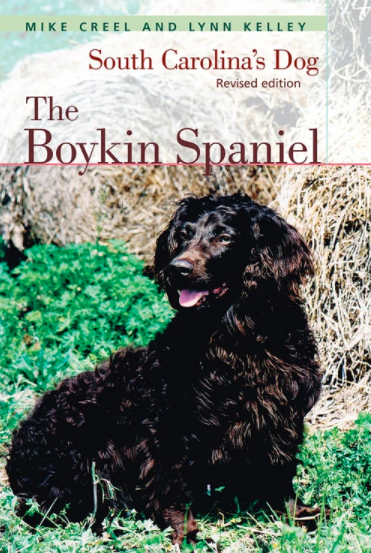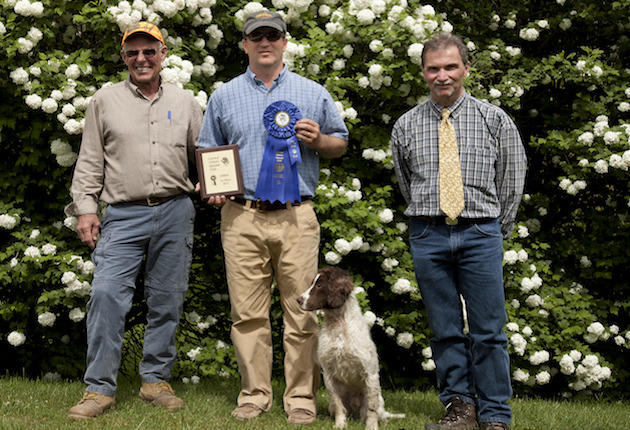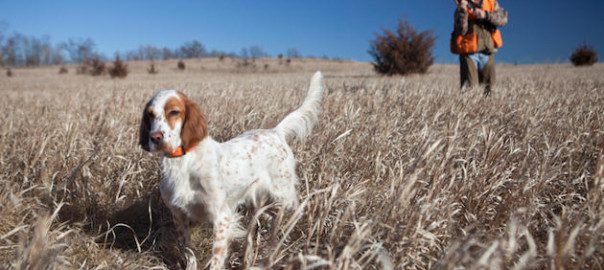So you don’t want a field trial dog. Are you sure?
Craney Hill Kennel gets many telephone calls from people who are looking for hunting dogs. Many times, I am told that they do not want one of those “field trial” dogs. Considering this strong statement, I cannot help but question the person’s reasoning for not wanting a field trial dog. The typical response is because the field trialers are too “hot” and difficult to control.
I find it amazing how little people actually know about the field trial world. I really want to say, “So that means you don’t want a dog that hunts in range, does not chase missed birds and sits when the whistle is blown?” The truth is that the field trial community demands a level of control over their dogs that most people crave.
The reason the general public has this negative impression is likely due to the limited exposure they have to “field trial washout” dogs. These dogs are eliminated from field trial competition for a multitude of reasons, but most of those reasons will never be an issue to the average guy that hunts his dog.
Let me begin by highlighting some of the negative experiences someone can have when purchasing a “washout” dog. First off, we need to eliminate the case of some professional trainer or field trial amateur being deceitful and dumping an untrained dog on some poor guy. I have no suggested cure for that situation. I am sure many of you will be nodding.
A Field Trial Winner That Was Guided Extensively on Wild Birds
The most common negative issue is that the dog takes off, does not come back when it is called and does not listen around the house. From a dog-training view, and assuming the dog is actually already trained, this is a dog being a dog. In this case, the dog is just trying to be the leader and the new owner needs to establish who is in charge. A few obedience sessions prior to going to the field should clean this up for the new owner.
Another negative issue is that the dog gets tired too quickly. This is because the field trial is a relatively short event (spaniel trials) so that each dog can be looked at over the course of the weekend. Field trial dogs are typically trained on two or three birds each time and run in a field 100 to 200 yards long. This creates a sprinter.
In time, the dog will learn to run more of a typical hunting pace. If you give it time and work on it gradually, it will all work out.
All dogs need to be steady-to-wing-and-shot for the spaniel field trials. Many hunters are of the opinion that an unsteady dog gets to a crippled bird better, resulting in fewer lost birds. My experience has been the complete opposite. First, a dog that is steady is under much better control in all situations due to the level of training that is required to make a dog steady. This means that a steady dog listens to the whistle better, hunts in range better, and is more obedient.
Also, a dog that is steady marks the fall of the bird better than one that is chasing. As such, it gets to the fall quicker to start tracking as compared to the dog that needs to hunt to the fall because of a poor mark.
Now I know many of you are disagreeing and I know you have seen unsteady dogs make great retrieves. I have as well, but if you really pay attention, you’ll notice how many times the dog did not actually go directly to the fall.
As far as tracking the crippled bird, a dog can or cannot take moving birds. It has nothing to do with being steady or unsteady.
That was a summary of some negatives that I hear regarding field trial dogs. I hear the reasons, but I disagree with them. The reason that I think you should be concerned with getting a field trial dog is because of their lack of hunting exposure. Our spaniels all come from field trial genes — either our own or puppies we have purchased elsewhere. The pedigrees include many prominent names in the field-trial community.
However, we test our dogs in a real hunting environment on wild birds. We do participate in field trials; however, our primary focus is on top-notch shooting dogs. By participating in the field trials, it keeps our training standard at a top level. Sit means sit and here means here. By hunting the dogs on wild birds each year, we can keep our breeding stock producing proven bird-finders.
So why do I think the bird-finding qualities are suspect with field trial dogs? I think most of the field trial dogs would be fantastic hunting dogs if they were raised and trained in Craney Hill Kennel’s environment and methodology. However, a field trial washout that is three or four years old has generally lost the opportunity to maximize its learning at a young age.
Most field trial dogs do not get birds other than pigeons and/or chukar until well beyond one year of age. Our puppies less than one year of age will typically have been exposed to pigeons, quail, chukar, grouse, woodcock and pheasants. At this young age, I don’t yet know if a puppy will make a good field trial prospect, but I do know that they can go hunt and find birds. That is the priority at our kennel; it is not, nor does it need to be, the priority at every kennel. Some kennels have the field trial games as the priority, and that’s OK.
A Field Trial Dog Loves You — Even When it gets Second Place
Winning second place didn’t change the owner’s love for his dog — and vice versa! So what does this mean to you? If you want a well-trained dog with strong genetics, a field trial dog is the best way to go. However, be sure it will hunt the way you want it to. Many times, the seller shows the dog in the same field that it has always been trained in. Trust me; it will never look as good as it does there — my dogs included. If the owner/trainer runs the dog in one direction, ask to see it work in another direction or different cover. You are buying a trained dog, so make sure the transmission works in both forward and reverse.
A few years ago, a gentleman purchased a trained field trial dog and went to hunt wild birds in Iowa. The dog walked at his side the entire time. Of course the guy was upset. Through a number of sequences, he called to buy a dog from me and was certainly filled with reservations. Needless to say, he loves the dog he got from me. This doesn’t mean that my dog was any better or worse. It means that our dogs are trained and exposed predominately to real-life hunting situations and the field trial dogs are trained and exposed to predominately field trial situations.
On another occasion, I went to Kansas with some field trial people and their dogs. They had a miserable time. They could not handle their dogs when the cover was over their head. The dogs ran behind them a lot and really struggled to produce birds. Our spaniels hunted much more aggressively, were less confused and handled the conditions much better. Our dogs were in their element and the field trial-trained dogs were not used to a bird running 400 to 600 yards before flushing.
In summary, most field trial dogs will make a good hunting dog for you. Some will be better than others. To maximize your dollars spent, make sure you see the dog work in multiple covers, on multiple birds and in a situation that you think closely resembles a hunting situation.
Be sure you are comfortable with the owner/trainer and that they will stand by the health of the dog. Also, be sure to get some help understanding the commands and how to handle the dog.
About the Author
Todd Agnew is a Eukanuba Pro Trainer and has been training field-bred spaniels since 1997. He participates in spaniel field trials and hunt tests in both the United States and Canada, guides hunters for wild gamebirds and is a professional dog trainer that firmly believes in the value of exposing hunting dogs to wild gamebirds. “If a dog can produce the wild bird that the fox, coyote, weasel and hawk have missed, then they would be of a caliber that any hunter would be proud to own.”
Todd has won and placed in numerous spaniel field trials, and has developed numerous dogs which their owners have won/placed with in spaniel field trials and passed spaniel hunt tests. More importantly, he has produced and help train numerous shooting dogs that please their owners.
 A gregarious creature with an uncanny ability to switch freely from playful family pet to disciplined hunting dog, the Boykin spaniel was named the state dog of South Carolina in 1985. By 2000 more than sixteen thousand Boykins from forty-nine states and numerous foreign countries had been registered with the Boykin Spaniel Society, based in Camden, South Carolina. Creel and Kelley offer an unparalleled resource for breed owners and devotees as well as a celebration of this home-grown hunter and companion, truly a dog for all seasons. Their heavily illustrated revised and updated edition also includes the breed standard, lists of award-winning dogs and owners, and a comprehensive bibliography of the breed. Shop Now
A gregarious creature with an uncanny ability to switch freely from playful family pet to disciplined hunting dog, the Boykin spaniel was named the state dog of South Carolina in 1985. By 2000 more than sixteen thousand Boykins from forty-nine states and numerous foreign countries had been registered with the Boykin Spaniel Society, based in Camden, South Carolina. Creel and Kelley offer an unparalleled resource for breed owners and devotees as well as a celebration of this home-grown hunter and companion, truly a dog for all seasons. Their heavily illustrated revised and updated edition also includes the breed standard, lists of award-winning dogs and owners, and a comprehensive bibliography of the breed. Shop Now




